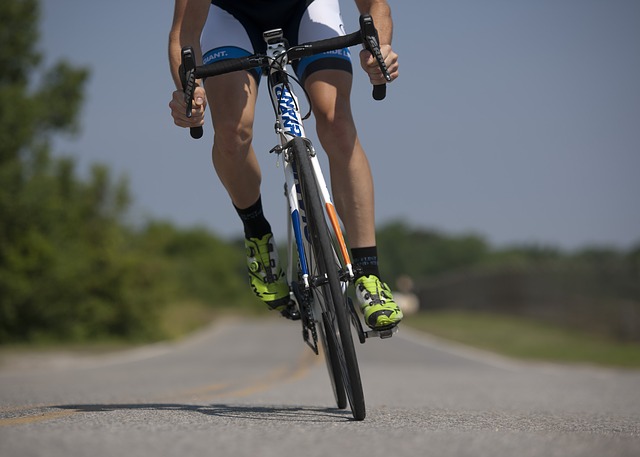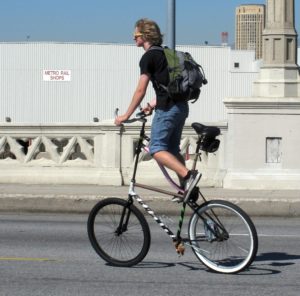
Everyone knows you need to insure your house and car, but what about other things you rely upon? With bicycle commuting becoming more common, more people are adding two-wheeled vehicles to their list of covered items.
Commuting Trend
The US still has a way to go before catching to up Holland, where 30 percent of workers commute to their jobs. Only about 0.6 percent of Americans bike to work. In Texas, College Station holds the biggest share, with 2.13 percent on two wheels, according to stats on Governing.com. Austin follows, at 1.88 percent or about 8,206 bikes on the road. The number is increasing. Nationwide, bike commuting jumped 38 percent between 2000 and 2012!
Many bike advocacy groups are trying to improve Texan roadways for bicyclists. Lubbock City Council recently approved a measure to expand bike lanes to connect Texas Tech Campus with downtown via Broadway. In Dallas, BikeDFW educates bicyclists and sponsors local bike events. BikeHouston teaches novices how to safely navigate the sprawling city. However, no cities require riders to carry bike insurance. And no matter how diligent the advocacy group or how safe the streets, accidents and theft still happen. And the more you ride your bike, the more the odds grow that you will be a victim.
E-bikes
The use of electric bikes is also on the rise. E-bikes have two modes: pedal-powered and electric. The electrical assist helps many riders conquer longer distances and bigger hills than they would otherwise manage on two wheels. On a single charge, riders can cover about 20 miles at a speed up to 20 miles per hour. At Rocket Electric in hilly Austin, e-bikes start at $1,100. Consumers can spend upwards of $3,000 for top models.
People often confuse electric bikes with scooters. Unlike scooters, electric bikes have pedals, can provide exercise, and require no license, insurance or registration. Electric mountain bikes can even go off-roading. Scooters go faster – up to 30 mph – while e-bikes generally top out at 20 mph, unless the rider pedals or is coasting downhill.
E-bikes have more complicated electrical and mechanical systems than regular bikes, and are computer-driven. This means greater expense and, again, questions about insurance.
Bicycling and Your Car Insurance
A cyclist’s biggest concern is often getting hurt. Usually your health insurance will cover injuries, depending on your deductible and plan. If you’re hit by a motor vehicle, the driver’s insurance kicks in. However, their insurance might not stretch far enough to cover all post-crash damage, such as lost wages, emotional distress, pain and suffering and lasting impairment. In some cases, the at-fault driver might have insufficient coverage which could become thousands of dollars in hospital bills.
In some parts of Texas, such as Houston, bicyclists get added protection under a law that classifies them as “vulnerable road users.” Motorists are required to pass cyclists at a safe distance, yield the right of way at intersections and otherwise interact in a friendly fashion. Failure to do so can cost the motorist 500 dollars.
However, if you hit another cyclist, car or pedestrian while riding your bike, your auto insurance won’t help you, since you’re not in a car. Instead, a homeowner or renter’s insurance policy should provide coverage while riding a bike. However, liability insurance does not cover liability to yourself. This means you must look elsewhere in your insurance arsenal to recoup damages to the bicycle itself and your own injuries. Depending on your assets, you may need to boost your liability protection.
On the up side, if you regularly commute to work by bicycle, you may put drastically fewer miles on your vehicle, perhaps qualifying for low mileage auto insurance.
Bicycling and Homeowners Insurance
Bicycles generally fall under homeowners and renters policies. However, after depreciation you may not be able to recoup the true value of your bike, and your policy may not cover theft or damage that happens when you’re away from home.
E-bikes are even trickier. Their motors put them in a gray area. Renters and homeowners insurance may not cover them because they’re motorized. Auto insurers may turn you down because you’re not required to be licensed or registered.
Serious riders with expensive gear may consider buying a policy from a bike-specific insurer, such as Velosurance or Markel. This specialty insurance offers extras like replacement bike rental and roadside assistance, and can cover you in the case of damage while traveling with your bike or if your heavy e-bike falls over and dents a car. You might consider scheduling your bike on a Valuable Items policy for an agreed amount.
E-bike racers often transport their bike’s wheels separately in special wheel bags. These disconnected and expensive wheels are especially susceptible to theft. Specialty bike insurance can make all the difference in recovering the cost of stolen wheels.
Less committed cyclists may find it sufficient to add a rider specifically covering their bikes in their homeowner’s policy, rather than buying a whole separate bike policy.
Finding a Carrier
At Hettler Insurance, we work with a variety of top insurers that can protect your bicycle. For example, Travelers offers off-premises protection of your bicycle, which means you’re covered if someone steals your bike from a bike rack while you’re doing your shopping. Unfortunately, the damage to the bike would be subject to the deductible for your home policy unless the bike were separately scheduled as mentioned above. Contact us today and give us the opportunity to find the best coverage for your bicycle or e-bike, no matter what type of cyclist you are.

